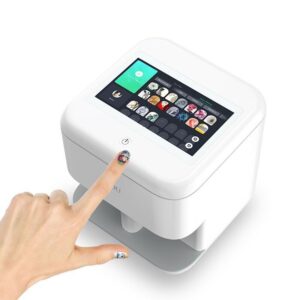The best 3D Printers should have the following Features
When looking for a 3D printer, it’s important to consider several features that can greatly impact its performance, versatility, and user-friendliness. Here are some key features that the best 3D printers should ideally have:

- Build Volume:
- A larger build volume allows for the printing of larger objects. This is an important consideration if you plan to print larger or more complex models.
- Print Resolution (Layer Height):
- Higher resolution allows for finer details and smoother surfaces. Look for a printer that offers a range of layer height options for different levels of detail.
- Build Plate and Material Compatibility:
- A heated build plate with good adhesion properties is crucial for preventing warping and ensuring successful prints. The printer should also be compatible with a variety of printing materials, including PLA, ABS, PETG, etc.
- Printing Speed:
- Faster printing speeds can save time, but it’s important to find a balance between speed and print quality. Some printers offer adjustable speed settings.
- Dual Extrusion (Multi-Material Printing):
- This feature allows for the use of multiple materials or colors during a single print job. It’s particularly useful for creating complex, multi-component models.
- Enclosed Build Chamber:
- An enclosed chamber helps maintain a stable and controlled environment for printing, which is especially important for materials like ABS that are prone to warping.
- Auto-Leveling or Bed-Leveling System:
- This feature ensures that the build surface is perfectly level, which is critical for successful prints. Some printers have automated systems that handle this process.
- Quiet Operation:
- Quiet stepper motors and cooling systems can be important, especially if the printer will be used in a shared or noise-sensitive environment.
- Print Connectivity and Compatibility:
- The printer should have multiple connectivity options, such as USB, SD card, or wireless, for easy file transfer and printing. It should also be compatible with various slicing software.
- Touchscreen or User-Friendly Interface:
- A user-friendly interface or touchscreen panel makes it easier to navigate settings, load files, and monitor the printing process.
- Reliability and Durability:
- Look for printers from reputable manufacturers known for producing reliable and durable machines. It’s also a good idea to read reviews and user feedback.
- Support and Community:
- Consider the availability of customer support, as well as the presence of a supportive online community or forum where users can exchange tips and troubleshooting advice.
- Safety Features:
- Safety features like thermal runaway protection, over-current protection, and fail-safes contribute to a safer printing experience.

Remember that the “best” 3D printer can vary depending on your specific needs, budget, and intended applications. It’s a good idea to research and compare models based on these features and consider your own preferences and requirements before making a decision.
FAQs
Q1: What is a 3D printer?
A 3D printer is a device that creates three-dimensional objects by adding material layer by layer. It reads a digital 3D model and then deposits successive layers of material, often plastic or resin, to build up the physical object.
Q2: How does 3D printing work?
3D printing, also known as additive manufacturing, works by slicing a 3D model into very thin horizontal layers and then printing each layer on top of the previous one. This process is repeated until the entire object is created. Different 3D printing technologies use various methods to deposit and harden the material, such as Fused Deposition Modeling (FDM), Stereolithography (SLA), or Selective Laser Sintering (SLS).
Q3: What can you make with a 3D printer?
You can create a wide range of objects with a 3D printer, including prototypes, customized parts, jewelry, toys, architectural models, medical implants, and more. The possibilities are limited only by your imagination and the capabilities of the printer.
Q4: What types of 3D printing materials are available?
Common 3D printing materials include thermoplastics (e.g., PLA, ABS), photopolymer resins, metals, ceramics, and composite materials. The choice of material depends on the specific application and the 3D printer’s compatibility.
Q5: How do you create a 3D model for printing?
To create a 3D model for printing, you can use computer-aided design (CAD) software or 3D modeling programs like Blender, Tinkercad, or Fusion 360. You can also find pre-made 3D models on websites like Thingiverse. Once you have a model, you need to export it in a format compatible with your 3D printer (e.g., STL or OBJ).
Q6: What are the advantages of 3D printing?
Advantages of 3D printing include rapid prototyping, customization, reduced material waste, intricate and complex geometries, on-demand production, and the ability to create one-off or low-volume parts cost-effectively.
Q7: Are there any limitations or challenges with 3D printing?
Challenges and limitations of 3D printing include limited material choices for some applications, post-processing requirements, layer lines on the printed object, speed (some prints can be time-consuming), and the need for regular maintenance of the printer.
